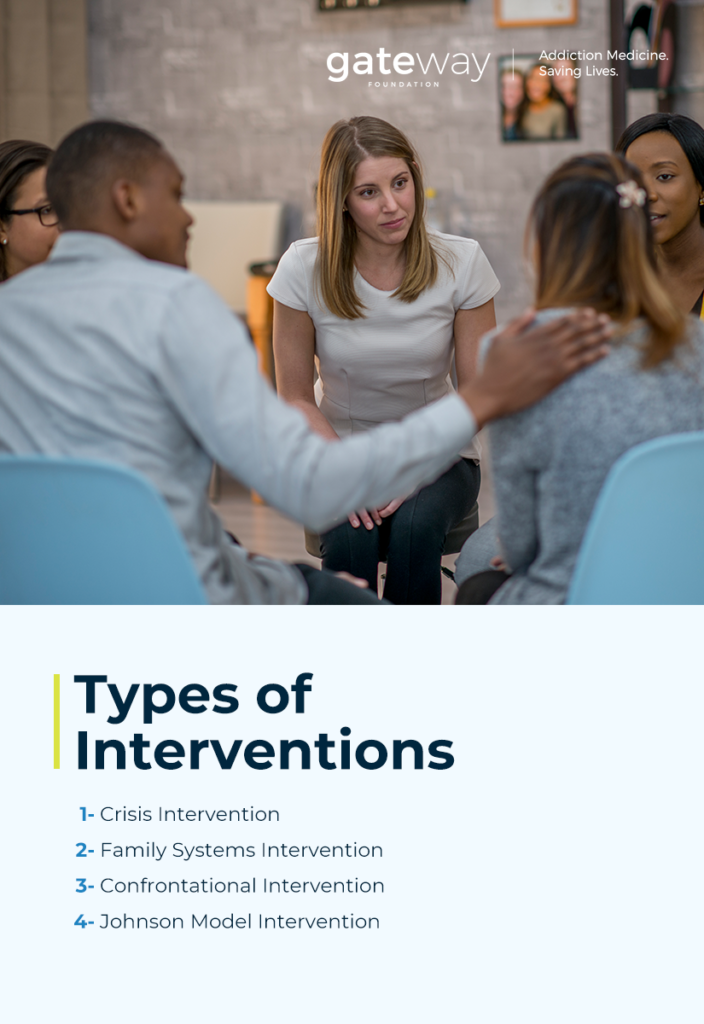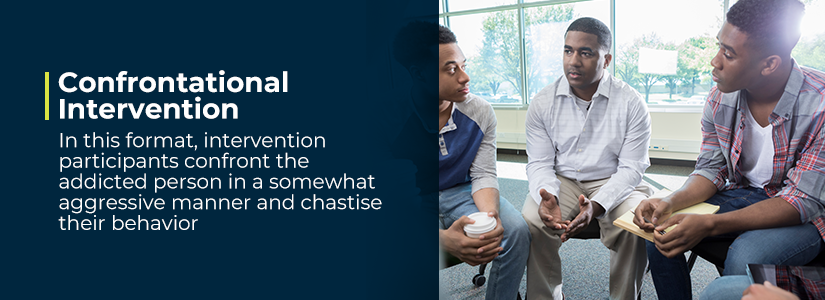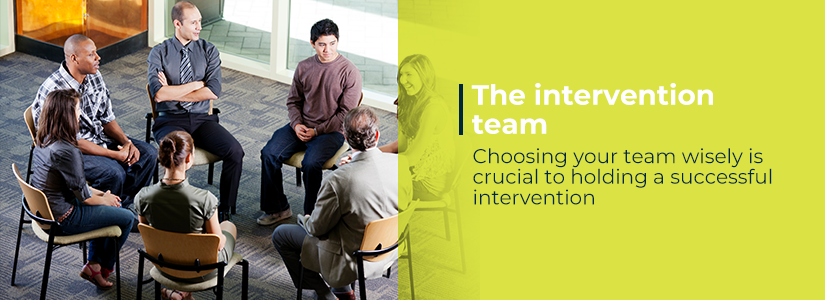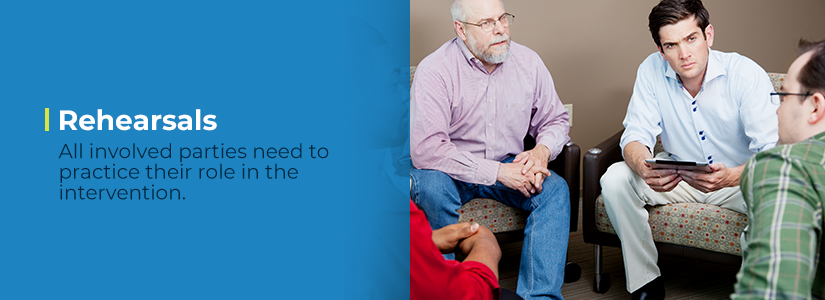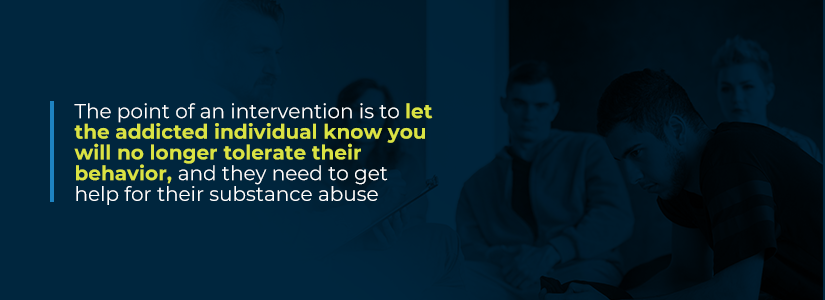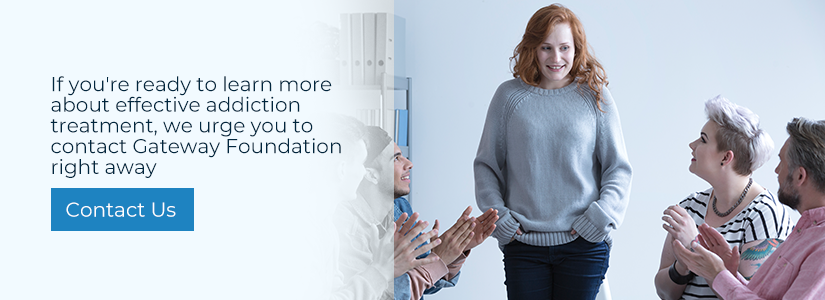- Oct 9
- Drug Addiction Treatment
Substance abuse in someone you care about is a challenge few people know how to handle. When someone begins to misuse drugs or alcohol, it often seems like they start turning into someone unrecognizable. You may struggle with feelings of helplessness and wonder what you can do to stop a loved one from continuing down the dangerous path of addiction. Interventions present an opportunity to alter the course of a person’s battle with drugs or alcohol and help them get on the road to recovery.
What Is an Intervention?
A drug or alcohol abuse intervention is a face-to-face conversation between someone living with addiction and a group of their loved ones. The conversation has two specific goals: getting the individual to admit they have a problem, and persuading them to accept treatment for it. Though there are multiple formats of intervention, the constant among all of them is the presence of loved ones who come together to try and help an addicted individual facilitate change.
Interventions are complex events that require a great deal of coordination and compassion to plan and perform. For an intervention to be truly persuasive, everyone in the room must be able to do their part in confronting the addicted individual, and that comes with a high emotional toll for everyone. But when performed to a well-thought-out plan, interventions can provide the motivation a loved one needs to choose appropriate addiction treatment. With some hard work and determination, you can plan an effective intervention.
 How Do You Know When an Intervention Is Necessary?
How Do You Know When an Intervention Is Necessary?
One of the nerve-wracking things about planning an intervention is determining whether it’s truly time for such a drastic measure. It’s common to agonize over this question and wonder whether you’re blowing everything out of proportion, so here are five signs a person’s addiction requires intervention.
1. Increasing Tolerance
Tolerance is the phenomenon that causes someone to stop responding to a drug as they once did. A person developing a tolerance will need more and more of a substance to achieve the same effect as when they began abusing it. An alcoholic, for example, might move from buying six-packs to buying whole cases. It’s common for alcoholics to switch from beer to liquor as time goes on, because lower-content alcohol can no longer get them intoxicated effectively due to the continued development of tolerance.
It’s not always easy to tell if someone is consuming more of a substance, especially if they are secretive about it. Alcohol is relatively hard to hide compared to substances of abuse like opioid painkillers. If you don’t live with the person in question, try enlisting the help of someone who does to find out if your friend or family member is filling prescriptions more often or making more trips to the liquor store or their drug dealer. Escalating consumption is a severe sign that an intervention is appropriate.
2. Financial Trouble
It is not cheap to maintain an addiction. No matter the substance, obtaining enough to sustain a growing addiction will put a dent in a person’s wallet. Has your friend or loved one recently begun asking to borrow money without being willing or able to explain what it’s for? Have you noticed their home or vehicle is showing signs of disrepair? Someone addicted to drugs or alcohol will often skip a new paint job or car repair in favor of purchasing substances.
3. Deteriorating Appearances
People struggling with addiction tend to let personal hygiene and general self-care fall by the wayside. Someone may gradually or suddenly develop bad breath or a persistent odor. Drug and alcohol abuse is also very hard on the body. Someone will likely begin to look tired and develop bags under their eyes from poor sleep quality. If you notice your friend or loved one starting to look worn out or sick from substance abuse, it’s time to plan an intervention before their health gets worse.
4. Declining Responsibility
As addiction takes hold of a person, they lose their sense of responsibility in the pursuit of the next drink or high. Has your loved one or friend been struggling to fulfill all their duties at work or school? Have they been taking more sick days to cope with the fallout from getting drunk or using drugs? These signs are giant red flags someone’s addiction is spiraling out of control. An intervention is likely necessary to prevent the behavior from worsening and costing the person their job.
5. Increasing Isolation
Addiction causes people to withdraw from their relationships to family and friends. At some point, it becomes nearly impossible to hide substance abuse from others, so a person may distance themselves or drop relationships altogether. This detachment can make interventions more difficult, so it’s essential to stage one before the addicted individual self-isolates completely.
Types of Interventions
You have several options to choose from when planning an intervention. The classic or “simple” intervention involves a group of individuals gathering, confronting the addicted individual and explaining the effects of their substance abuse and behavior. These people can be family, friends or co-workers, and a professional interventionist may be part of the picture as well. Loved ones may choose from the following five variations on the traditional intervention.
1. Crisis Intervention
Whenever possible, staging an intervention should be a planned event. However, the unpredictability of someone abusing drugs can lead to crises where there is little alternative to performing an intervention on the spot. When someone gets into an accident, engages in abusive behavior or turns up intoxicated to an important event, it may be appropriate to confront them in the moment.
Crisis interventions are the most challenging to pull off successfully because the participants have generally not discussed the plan in any detail beforehand. In some cases, an intervention may have been in the works, but must be a rush job to address the crisis. The spontaneous nature of a crisis intervention can, however, create a more substantial emotional impact as long as participants remember to come from a place of concern rather than anger.
2. Family Systems Intervention
Addiction is an incredibly complex condition, and dysfunctional family relationships can often exacerbate it. Perhaps one family member regulary enables the subject’s substance abuse, or multiple members of a family are struggling with addictive behaviors. A family systems intervention has all the hallmarks of a classic intervention, but with the mandatory inclusion of a mental health treatment professional.
The goal of family systems intervention is to get each affected member into treatment, or convince them to accept counseling individually or as a group.
3. Confrontational Intervention
When you see interventions depicted on reality TV, what you’re seeing is likely the confrontational approach. In this format, intervention participants confront the addicted person in a somewhat aggressive manner and chastise their behavior. The participants make demands on the subject to enter treatment, and clarify the consequences for refusing to do so. While it makes for a good spectacle on television, confrontational interventions are the most likely to elicit a negative response from the subject.
A modified version of the confrontational approach is the “tough-love” intervention. It is similar to a classic intervention in that it is usually a surprise for the subject, but planned for the other participants. This form of intervention involves expressing love and concern for the addicted individual, yet firmly asserts the range of consequences the person will face if they do not enter treatment.
4. Johnson Model Intervention
The Johnson Model makes the intervention process more formal. A therapist or trained interventionist meets with the team of friends and family to determine what the subject needs to know, helping the participants formulate their communications in a non-confrontational and fact-based manner.
Participants cannot express anger or place blame during the intervention, making it non-confrontational. The team must select three or more treatment options to give the subject. The Johnson Model can be successful when thoroughly implemented, but the problem most teams run into is that they do not complete one or more aspects of the intervention.
5. ARISE Model Intervention
The Albany-Rochester Interventional Sequence for Engagement (ARISE) model is the most complex method for staging an intervention. The Association of Intervention Specialists (AIS) developed it as an alternative to the Johnson Model. ARISE has three stages, and its unique proposition is that the addicted individual should be part of the process from the very beginning.
Level 1 of an ARISE intervention is the first call from a concerned party to an interventionist for a consultation. The specialist helps the concerned party develop a support network to motivate the person needing treatment. If the individual doesn’t accept help, it’s time to escalate to Level 2. Level 2 involves the individual attending two to five actual intervention meetings. According to AIS, 80% of addicted individuals enter treatment at this stage. If they remain unconvinced at Level 2, the serious consequences introduced in Level 3 meetings may persuade them to seek treatment.
Seven Considerations for Planning an Intervention
There are a lot of moving parts in the mission to get your friend or loved one into addiction treatment. Keep these 10 tips and considerations in mind when planning a drug or alcohol abuse intervention.
1. The Intervention Team
Choosing your team wisely is crucial to holding a successful intervention. Each member of the team must have a substantial relationship with the subject and be able to keep it together during a confrontation without deviating from the plan or losing their temper. A trained interventionist can provide the most thorough evaluations of your intervention team and identify participants who may not be well-suited to the undertaking.
2. The Location
Many as-seen-on-TV interventions take place in the subject’s family home. While this happens with the best of intentions, it is not the most effective location for an intervention. If you confront a person at home, they may barricade themselves in a bedroom or bathroom before the intervention can even get off the ground.
Holding the intervention in a neutral space formalizes the event and helps drive home the fact that this is a sincere interaction, as opposed to holding it at home where you’ve likely already had numerous unsuccessful attempts to address the addiction.
3. The Time
One of the distinct challenges of a successful intervention is finding the right time to speak with your friend or loved one. The self-destructive behaviors of addiction can be unpredictable, but if you know the person’s routine well enough, you can usually pinpoint a time when they will be as close to sober as possible. The more sober they are, the more readily they can grasp the gravity of the situation and think clearly about how they want to proceed.
Whenever possible, the subject of an intervention should not be hungry or tired, as these conditions can exacerbate negative reactions.
4. Rehearsals
All involved parties need to practice their role in the intervention. Everyone will be tense and emotions will be running high, making it more difficult to keep a train of thought. To remain calm and comprehensible, everyone should have their contributions memorized. Each participant can and should practice on their own, but at least one group rehearsal is a smart strategy to work out any kinks and ensure the whole presentation is as cohesive as possible.
Rehearsals may also help weed out people who are not suitable participants for the intervention. If someone is unwilling to attend one or two scheduled rehearsals, they likely lack the commitment necessary to be a useful participant.
5. The Presentation Order
The order of speakers in an intervention deserves close attention. Interventions are over the minute the subject says yes to entering treatment, and some testimonies may carry greater weight than others. Some people may feel more moved by the contribution of their child than their spouse, or vice versa. Discuss the possible presentation orders with your intervention team. One or more of them may have insights on whose testimony will be most impactful.
A general rule of thumb is to go in ascending order of emotional impact. That would mean having the people closest to and most affected by the subject go last to achieve the maximum motivation.
6. Sticking to the Script
Interventions are situations in which cooler heads must prevail. The whole point of an intervention is to present a structured argument for a person entering substance abuse treatment, so keeping that structure intact is critical to success. Emphasize the importance of sticking to the script to the entire team. If one person goes rogue, it can throw off the synergy of the whole event and fracture the unified front necessary to persuade the addicted individual to seek help.
7. Monitoring Body Language
It’s not easy to control body language, especially when everyone in the room is keyed up. However, paying attention to basics like avoiding crossed legs and folded arms can help foster an atmosphere of compassion. Rehearsals are a good place to work on body language that indicates openness and compassion.
Why Interventions Fail
Do interventions work? It depends.Just as it’s essential to know what makes an intervention successful, it’s equally critical to know what barriers might cause one to fail. Once you have a better idea of the challenges you may face, you’ll improve your chances of surmounting the barriers and succeeding in helping your loved one get treatment.
1. Not Presenting a Unified Front
For an intervention to be effective, everyone on the team must be on the same page. If someone feels one of the presenters is being too harsh on the participant, for example, they’ll likely show that misalignment through their facial expressions and body language. The subject may be able to pick up on that and exploit any cracks in the armor.
This example drives home the point of why rehearsals are critical. When everyone is aware of what the members of the group will be sharing, there are no surprises that might lead to derailing disagreements during the intervention.
2. Allowing Negotiation
The point of an intervention is to let the addicted individual know you will no longer tolerate their behavior, and they need to get help for their substance abuse. However, many people who struggle with addiction are remarkably manipulative. If you or a member of your group give any ground in the form of unplanned negotiations, the subject may take this sign of weakness and run with it. Don’t even open the door to negotiations like a promise to cut back on substance use, and prepare a script for the possibility that the subject will try to loosen your terms.
3. Losing Tempers
There is an abundance of emotions present in any intervention situation, and anger is certainly one of them. However, allowing that anger to show is one of the surest ways to ruin your carefully laid plans. Make sure everyone understands the importance of remaining level-headed, and consider enlisting an interventionist or other mental health professional to give tips on keeping anger and other strong emotions in check.
4. Lack of Education
It’s hard to convince someone to go to treatment when you don’t know how it works or what it involves. Demonstrating that you’ve taken the time to do your research helps the intervention subject understand the gravity of the situation and your commitment to helping them. Conversely, if you don’t know what you’re talking about, the addicted individual will trust you less and be less likely to follow your advice.
Ensure you have at least a foundational understanding of the person’s substance of abuse and how it works in the body. Furthermore, intervention planning requires you to do your homework on the types of addiction treatment appropriate for that substance and the individual who needs the treatment.
Often it’s helpful to get a professional involved to guide the intervention. Gateway Foundation can help provide the education you need to set the intervention up for success.
5. Inaccessibility of Treatment
Sometimes, the addicted individual will refuse treatment solely out of a perception that it’s inaccessible to them. There may be issues like lack of insurance or sufficient coverage for treatment — or perhaps they might feel they can’t leave their job to pursue residential treatment.
Here is where a thorough understanding of treatment options comes into play. Being able to present alternatives to residential treatment, such as intensive outpatient treatment, can make your loved one understand that there is an appropriate option out there for them.
Gateway: Giving Life a Chance
Planning a drug intervention or an intervention for alcohol abuse can be emotionally draining. One of the ways to ensure peace of mind for yourself and your intervention group is to find the best available quality of treatment should your loved one agree to it. Gateway is a leader in evidence-based addiction treatment that can give your loved one another chance at a clean and sober life.
At Gateway, we offer a range of treatment services with programs for a variety of different needs. In addition to our adult rehabilitation program, we offer treatment tailored to the needs of specific groups like women, teens and those with a dual diagnosis. No matter whether your loved one requires full residential treatment or participates in an outpatient program, they will receive compassionate care free of judgment and the lifelong support they need to sustain sobriety for the long term.
If you’re ready to learn more about effective addiction treatment, we urge you to contact Gateway right away. Call us at 877-505-4673, get quick help through our live chat feature or fill out our contact form today.

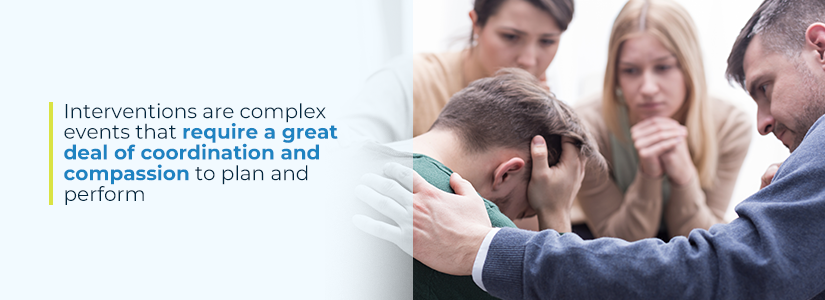 How Do You Know When an Intervention Is Necessary?
How Do You Know When an Intervention Is Necessary?
